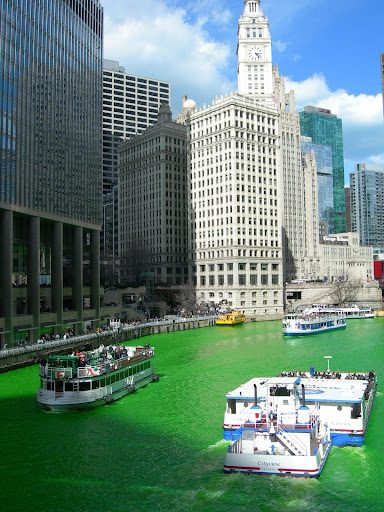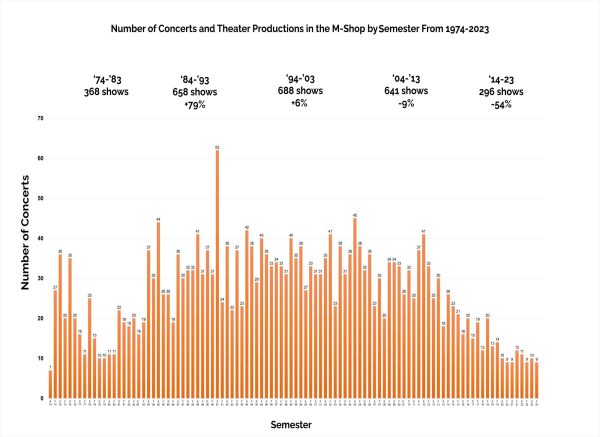Fast fashion leaves negative environmental impact
Junior Marie Beecham strives to live a sustainable life. Here she is wearing clothes she’s thrifted from Goodwill.
October 7, 2019
Fast fashion is a controversial trend. While the clothing that’s produced as a result of this trend is by far cheaper than the designer styles, its process of recreating and imitating high fashion is harmful to the environment and labor workers, causing some consumers to strike against it.
Fast fashion derives from the ever-changing, fast-paced concept of needing to stay on top of the latest trends, forcing companies to produce, waste and circulate more clothing items than they would if they focused on staple and basic items.
But how can the trend be avoided when it’s virtually everywhere? And how can action be taken against large companies that use such practices when people have no control over how they produce clothing items?
Refusing to shop at retailers who contribute to the process of fast fashion is one way to do the trick. Forever 21, a brand known for first helping to define the process of fast fashion, filed for bankruptcy mid-September and is planning to close up to 178 locations in the U.S. as well as 350 locations globally.
“I’ve shopped at Forever 21 before and I know that some things aren’t necessarily built to quality, and for me I’m looking for more quality pieces than fashionable pieces I suppose,” said Kathrine Ginapp, assistant teaching professor in apparel, events and hospitality management. “I like to invest in products that I know I can wear for a variety of things and will last.”
Ginapp said the lifespan of an item is one factor that’s most important to her when buying clothing items.
According to Business Insider, the overall appeal of Forever 21 has been lost with young adults who would be expected to be the store’s main demographic. Young adults today crave a sense of individuality and differentiation with the clothes they buy, and fast fashion is the opposite.
“I avoid fast fashion by buying only from ethical brands, thrifting or buying secondhand,” said Marie Beecham, junior in pre-business. “I also use apps like Depop, Vinted and Poshmark to buy used things from people so that I’m never giving my money to a business that takes advantage of people or the planet.”
Beecham is an advocate for living life waste-free, and she has an Instagram account, @wastefreemarie, dedicated to living without waste and helping inform others about the harmful effects of some of the items they use everyday.
Exploring topics such as fast fashion, eating meat-free and buying sustainable items to replace plastic items used on a daily basis, Marie is a firm believer that we can all try to practice sustainability. She encourages her followers to keep in mind the bigger picture: a more sustainable and healthier home for everyone.
“[Do] some research about the brands, what you’re actually buying and what the company stands for in terms of actual sustainability and responsibly sourcing materials for products,” Ginapp said. “But I think also just in terms of yourself being sustainable, buying articles of clothing that could be reused or re-worn in a variety of ways — so not just buying a shirt because it’s good for work, but buying a shirt that maybe you could wear for work but also maybe use for going out that night or some type of an event. Things like that, products that are functional in a variety of ways.”
Documentaries, social media and various environment-friendly brands are helping consumers become more aware about the harmful effects of their favorite $10.99 dress.
“Last year, I watched a documentary called The True Cost,” Beecham said. “The documentary explained how big companies are constantly marketing in a way that makes us want more all the time.”
Articles of clothing produced with the intent of being fast fashion are made to wear down or deteriorate quickly, so the consumer will move on to the newest trend and purchase more.
Not only does fast fashion have harmful impacts on the environment, but it also heavily impacts the lives of those working to produce items of clothing in such a short amount of time.
“Most of our clothes are made at the hands of neglected laborers and even slave labor,” Beecham said. “Globally, there are over 40 million people making our clothes who are victims of human trafficking, debt bondage and forced labor.”
Digital e-commerce stores are proving to be increasingly popular with Gen Z and millennials due to the alluring qualities that draw them in. These qualities include being thrift shop-like, reasonably priced and all at the touch of a finger.
Depop is one of the easier apps to navigate, allowing users to shop and search for specific styles and “like” items, making it easier to go back and purchase products later on.
Popular websites such as Shein partake in fast fashion, but offer consumers a cheap option when they’re looking to fit in with their peers and shop the latest trends. It’s easy for consumers, especially young adults, to purchase items on a whim that are both cheap and give them the satisfaction of keeping up with the latest trends.
“If they’re looking for something that everyone else is wearing right now, they’re going to look for something that they have easy access to and that [is] cheap and they can get it right away, so I always think there’s going to be a demand,” Ginapp said.
Ads on Instagram and constant exposure to Shein, Forever 21 and brands similar to them are what causes young adults to shop.
However, thrifting accounts on Instagram as well as thrift-like websites are increasing in popularity as more and more individuals are realizing the benefits of shopping more sustainably and doing so with some extra money in their pockets.
“I personally think it’s a really great idea,” Ginapp said. “I’ve shopped on some websites for things like that. I think that it’s probably going to take off even more. It’s probably where people prefer to shop at because they get quality or higher-end pieces that they could go to these other stores and get more cheaply-made products.”
The most popular places to thrift in Ames include Goodwill, The Salvation Army and Overflow. These stores offer unique finds at an affordable price. Being more aware and conscious when buying clothes is an easy step to living a more sustainable lifestyle.

















